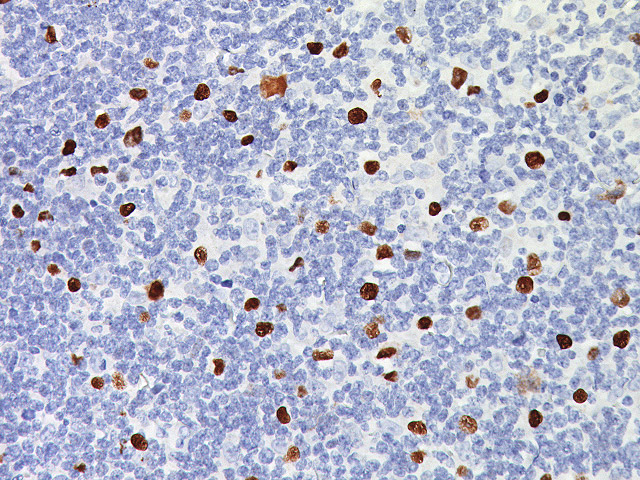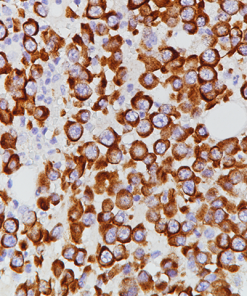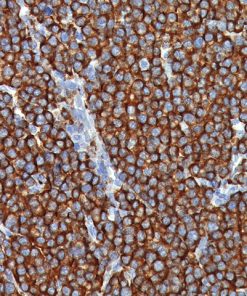Description
Product Description
The Epstein – Barr virus is a member of the gamma-herpes viruses (HHV-4). Epstein-Barr Encoded (EBER) Probe is a digoxigenin-conjugated DNA oligonucleotide designed to bind EBER-1 and EBER-2 mRNA sequences that may be expressed in latently infected cells.1
Datasheets & SDS
References
1. Epstein M, Achong B, Barr Y. Morphological and biologicalstudies on a virus in cultured lymphoblast from Burkitt’s lymphoma. J.Exp. Med. 1965; 121:761-770.
2. Henle G, Henle W, Clifford P, et al. Antibodies to EB virus in Burkitt’s lymphoma and control groups J. Nat. Cancer Inst. 1969; 43:1147-1157.
3. Komano, J S. Maru, K. Kurozumi,t. Oda, K. Takada. Oncogenic role of Epstein-Barr virus encoded RNAs in Burkitt’s lymphoma cell line Akata. J. Virol 1999 73:9827-31. 4. Jaffe ES, Diebold J, Harris NL, Muller-Hermelink HK, Flandrin G, Vardiman JW. Burkitt’s lymphoma: a single disease with multiple variants. The World Health Organization classification of neoplastic diseases of the hematopoietic and lymphoid tissues. Blood. 1999 Feb 1; 93(3):1124.
5. Clinical and Laboratory Standards Institute (CLSI). Protection of Laboratory workers from occupationally Acquired Infections; Approved guideline-Third Edition CLSI document M29-A3 Wayne, PA 2005
Related products
Molecular
Molecular
Molecular







